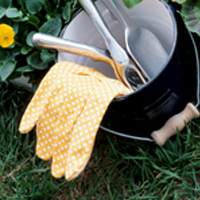15 Expert Tips for a Perfect Vegetable Garden Layout
Creating a well-planned vegetable garden layout can transform your outdoor space into a productive haven. Growing vegetables provides fresh produce and brings a sense of satisfaction and connection to nature.
Whether you’re a seasoned gardener or a newbie, planning your garden layout is crucial for success.
Understanding Your Space
Before you start planting, evaluate your space. Consider the size of your garden, the amount of sunlight it receives, the quality of the soil, and access to water.
These factors will influence the types of vegetables you can grow and how you should arrange them.
Types of Garden Layouts

Traditional Rows
Traditional row gardening involves planting vegetables in straight lines.
This method is simple and effective for extensive gardens but can be less efficient for smaller spaces.
It allows for easy access to plants and makes weeding and harvesting straightforward. However, it may require more space and can lead to soil compaction if not appropriately managed.
Raised Beds
Raised beds are elevated garden plots that offer better soil control, drainage, and accessibility. They are ideal for beginners and those with poor soil conditions.
Square Foot Gardening
Square foot gardening involves dividing your garden into small, manageable sections. This intensive planting method maximizes space and yields, making it perfect for urban gardeners.
Container Gardening
Container gardening is perfect for small spaces like balconies or patios.
Choose containers large enough for your vegetables and ensure they have good drainage.
This creates a perfect vegetable garden layout.
Choosing the Right Containers
The first step in container gardening is selecting the proper containers. Here are some tips:
- Size: Ensure the container is large enough to accommodate the roots of the plants you intend to grow. For example, tomatoes and peppers need larger containers (at least 5 gallons), while herbs and lettuce can thrive in smaller pots.
- Material: Containers can be made from various materials, including plastic, clay, metal, and wood. Each material has its pros and cons. For instance, plastic containers are lightweight and retain moisture well, while clay pots are breathable but can dry out quickly.
- Drainage: Proper drainage is crucial to prevent waterlogging and root rot. Ensure your containers have drainage holes at the bottom. If not, you can drill them yourself.
Selecting the Right Soil
Using the right soil mix is essential for successful container gardening. Garden soil is often too heavy for containers and can compact over time.
Instead, use a high-quality potting mix that is well-draining and rich in organic matter. You can also add perlite or vermiculite to improve aeration and drainage.
Choosing Vegetables for Containers
Not all vegetables are suitable for container gardening.
Here are some of the best choices: for a vegetable garden layout
- Tomatoes: Choose determinate varieties or dwarf bush types for smaller containers.
- Peppers: Both hot and sweet peppers do well in containers.
- Lettuce and Spinach: These leafy greens are perfect for shallow containers.
- Radishes and Carrots: Use deep containers for root vegetables to allow enough room for growth.
- Herbs: Basil, parsley, thyme, and mint are excellent choices for container gardening.
Planting and Care
- Planting:
- Fill your container with potting mix, leaving a couple of inches at the top.
- Sow seeds or transplant seedlings according to the plant’s specific requirements.
- Water thoroughly after planting.
- Watering:
- Container plants dry out faster than those in the ground, so regular watering is essential.
- Check the soil moisture daily and water when the top inch feels dry.
- Water should be used early or late in the evening to minimize evaporation.
- Fertilizing:
- Container plants rely on you for nutrients. Use a balanced, water-soluble fertilizer every 2-4 weeks during the growing season.
- Organic options like compost tea or fish emulsion can also provide essential nutrients.
- Pruning and Support:
- Some vegetables, like tomatoes and cucumbers, may require staking or cages for support.
- Regularly prune dead or yellowing leaves to promote healthy growth and prevent disease.
Dealing with Pests and Diseases
Container plants can still fall victim to pests and diseases. Here are some tips for a vegetable garden layout:
- Inspect Regularly: Check your plants regularly for signs of pests or disease.
- Natural Predators: Encourage beneficial insects like ladybugs and predatory wasps.
- Organic Solutions: To control pests, use neem oil, insecticidal soap, or homemade sprays (e.g., a mix of water and dish soap).
- Good Air Circulation: Ensure good air circulation around plants to prevent fungal diseases.
Benefits of Container Gardening
- Flexibility: Move containers to optimize sunlight exposure or protect plants from harsh weather.
- Control: Better control over soil quality, moisture levels, and pests.
- Accessibility: Ideal for those with limited mobility or space.
- Aesthetics: Add beauty and greenery to small or urban spaces.
Container gardening is a versatile and rewarding way to grow vegetables, even in the smallest of spaces. With the proper containers, soil, and care, you can enjoy a bountiful harvest of fresh produce at your doorstep.
Planning Your Vegetable Garden Layout
Start by sketching a map of your garden.
Consider the principles of companion planting, where certain plants grow better together, and crop rotation, which helps prevent soil depletion and pest buildup.
Choosing the Right Vegetables
Select vegetables that are suitable for your climate and season.
If you’re a beginner, start with easy-to-grow vegetables like lettuce, radishes, and tomatoes. Aim for a diverse selection to keep your garden exciting and productive.
Designing for Accessibility
Create pathways and space your plants adequately to make maintenance easier. Consider raised beds or vertical gardening to reduce the need for bending and reaching.
Soil Preparation and Fertilization
Test your soil to understand its nutrient content and pH level. Amend it as necessary with compost, manure, or other organic materials. Decide between organic and synthetic fertilizers based on your gardening philosophy and plant needs.
Watering Systems
Efficient watering is crucial for a healthy garden. Drip irrigation and soaker hoses deliver water directly to the roots, reducing evaporation. Conserve water by watering early in the morning or late in the evening.
Pest and Disease Management
Integrated Pest Management (IPM) combines cultural, biological, and chemical practices to control pests with minimal environmental impact. Identify common pests in your area and choose appropriate control methods.
Planting Techniques
Decide whether to start your plants from seeds or transplants. Follow planting depth and spacing guidelines to ensure your vegetables have enough room to grow.
Maintenance Tips
Regular maintenance tasks include weeding, mulching, pruning, and staking plants. Mulch helps retain moisture and suppress weeds while pruning and staking support plant growth.
Harvesting Your Vegetables
Learn to recognize when your vegetables are ripe. Harvesting at the right time ensures the best flavor and nutritional value.
Extending the Growing Season
Use cold frames, row covers, or greenhouses to protect your plants from cold weather and extend your growing season. Consider fall and winter gardening to enjoy fresh produce year-round.
Preserving Your Harvest
Preserve your surplus produce by canning, freezing, or drying. Proper storage techniques can keep your vegetables fresh for months.
Conclusion
A well-planned vegetable garden layout can provide a bountiful harvest and a rewarding gardening experience. You can create a thriving garden by understanding your space, choosing the right layout, and following best practices.
FAQs
1. How do I start a vegetable garden from scratch?
Begin by choosing a sunny spot, preparing the soil, and selecting vegetables suitable for your climate. Plan your vegetable garden layout and start planting!
2. What vegetables are best for beginners?
Easy-to-grow vegetables for beginners include lettuce, radishes, tomatoes, and zucchini.
3. How do I deal with common garden pests?
To manage pests effectively, use integrated pest management (IPM) strategies, including cultural, biological, and chemical methods.
4. How often should I water my vegetable garden?
Water your garden profoundly and infrequently, aiming for 1-2 inches per week, depending on weather conditions.
5. Can I grow vegetables indoors?
Yes, many vegetables can be grown indoors with adequate light and space. Consider herbs, lettuce, and dwarf tomato varieties for indoor gardening.




